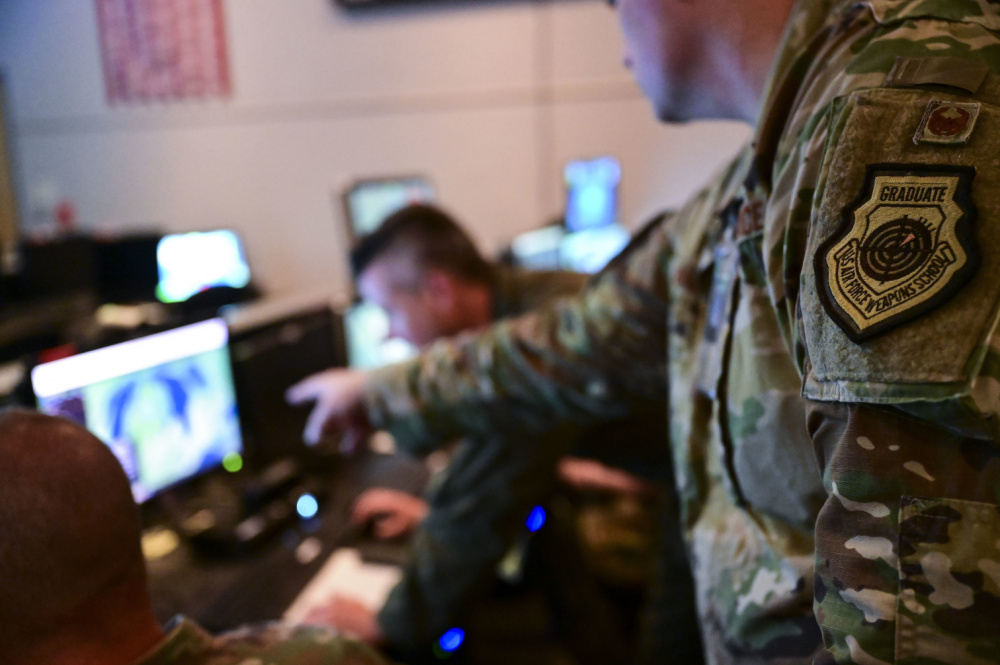ABMS test events focus on applying tech to enterprise IT

As the Air Force continues testing artificial intelligence programs for the future of connected warfare, it is also assessing how some of that tech can support the service’s broader enterprise IT modernization goals.
The Air Force recently wrapped up its fifth Architecture Demonstration and Evaluation (ADE) event, which brought together 11 combatant commands, 46 commercial companies and a host of tech-focused offices throughout the Department of Defense to test emerging tech in the battlefield.
The ADE events were created to test the Advanced Battle Management System (ABMS) and other programs. ABMS is designed to link more data from battle together and use artificial intelligence to help analyze it. Demonstrations for the events went from July 8-28, according to a release.
The latest experiment tested new “packages” of communications technologies that could improve both the reliability and security of data flowing across the globe, Preston Dunlap, the Air Force’s chief architect, said during a press conference Thursday.
Those new technologies could also be used to improve enterprise IT, he added.
“We have always been doing that; however, in the first year we had been laser-focused on [the Advanced Battle Management System],” Dunlap said of the event’s focus on IT, not just ABMS.
ABMS is the Air force’s contribution to Joint All Domain Command and Control (JADC2) — a framework the military hopes the services will implement where all data and communications are linked from air, land, sea, space and cyberspace operations. AI will be central to this new way of waging war to sift through all that newly linked data and generate options for commanders.
During this fifth version of the demonstration, the team was looking to make successful tech “ubiquitous” for the Air Force enterprise, Dunlap said. That means new ways of transmitting data or securing endpoints for ABMS could become standard practice in enterprise IT.
Dunlap added that not only are specific pieces of tech being tested, but the entire underlying architecture of how tech is put together is also being tested. The open-architecture approach ABMS has could also be a template for enterprise IT solutions, Dunlap said.
“ADEs are interned to be able to funnel together departmentwide space and air capabilities,” he said.
One program that showed success was the Defense Advanced Research Projects Agency (DARPA) called System-of-systems Technology Integration Tool Chain for Heterogeneous Electronic Systems (STITCHES). The software is essentially an automated translation service for data. When a weapon system or platform spits out numbers in a format unreadable to another machine, STITCHES can be one of the tools to help translate it to readable format.
The program was at risk of falling through the cracks of the DOD’s financial system, due to budgeting issues. Dunlap said the Air Force will be picking up the tab on the software, saying it could be a viable tool for future use. But it’s unclear how it would work on an enterprise level.
Tech was not the only thing experimented with — the operational construct of how tech gets used in battle was another focus. Much of that came down to arranging the right personnel, Dunlap said.
The event consisted of a broad collection of sub-events that included Northern Command’s Global Information Dominance Experiment 3 (GIDE 3) and IndoPacific Command’s Pacific Iron 2021 Agile Combat Employment. Dunlap described the model as a Venn diagram, where each event had large overlaps in technology used and personnel, but they also hosted their own, unique tests.
“We are drawing a common thread through it all,” Dunlap said.
Contributing to data and AI
One of the personnel moves the Air and Space Forces are making is contributing to a new initiative to send technical experts into the field. The AI and Data Accelerator Initiative (AIDA) sends small teams of data and AI experts out to combatant commands to build new tools to fit their specific problem sets. The idea came from the National Security Commission on AI and was implemented by the Deputy Secretary of Defense Kathleen Hicks.
Dunlap said the Air Force is already sending people to build tech that will help combatant commands in the field use their data better.
“We are pushing that hard and we already started building a minimum viable product,” he said.
The initiative is designed to be department-wide and eventually will include all services. Dunlap said the Air Force is leaning especially hard into it, praising the initiative as a way to put technical talent where it’s needed.






